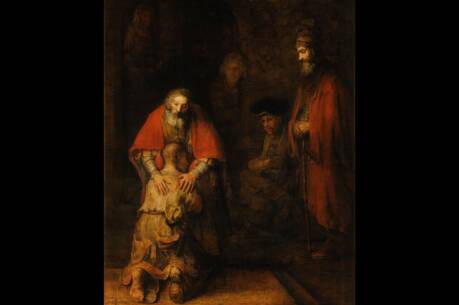What John Saw
In his first chapter John the Evangelist develops an overture or prologue to his account of Jesus public ministry as well as his death and resurrection. He gives special attention to the various titles applied to Jesus, ranging from Word of God to the glorious Son of Man; taken together these titles highlight the decisive importance of Jesus. Todays selection devoted to the testimony of John the Baptist focuses on Jesus as the Lamb of God, the bearer or vehicle of the Holy Spirit and the Son of God.
John testified that Jesus is the Lamb of God who takes away the sin of the world. This imagery evokes the Old Testament rituals of sacrificing an animal to God as a way of atoning for sins and restoring right relationship with God. For early Christians the image of Jesus as the Lamb of God expressed the conviction that Jesus died for us and for our sins and made possible a right relationship. Theologians call this justification. Through the Lamb of God we can hope for forgiveness of our sins and right relationship with God.
John also testified that at the baptism the Holy Spirit descended on Jesus, and that Jesus became the primary bearer or vehicle of the Holy Spirit. This in turn qualified Jesus to baptize with both water and the Holy Spirit. In his Last Supper discourse Jesus promises to send the Holy Spirit upon the community of his followers. He calls the Holy Spirit the Paraclete, a word that combines the Spirits roles as consoler, guide and defender. Through the Spirit of Jesus we can hope for the gift of the Holy Spirit and the possibility of living in the spirit.
John testified that Jesus is the Son of God, a title that evokes the figure of the Servant of God described in Isaiah 49. There the servant has the mission to proclaim Gods saving power not for Israel alone but for all nations. As the Son of God, Jesus addressed God as his loving father. And Jesus invites us to share his own unique relationship of intimacy with God. Through the Son of God we are Gods children now. We can stand alongside Jesus and call upon God as our father too. What did John see in Jesus? What can we hope for from Jesus? Through Jesus we can hope for forgiveness of sins, right relationship with God, the guidance of the Holy Spirit and permission to approach God with confidence and even boldness as befits the spiritual brothers and sisters of Jesus. This is what Paul means when he describes Christians as sanctified in Christ Jesus and called to be holy.
This article also appeared in print, under the headline “What John Saw,” in the January 7, 2008, issue.








